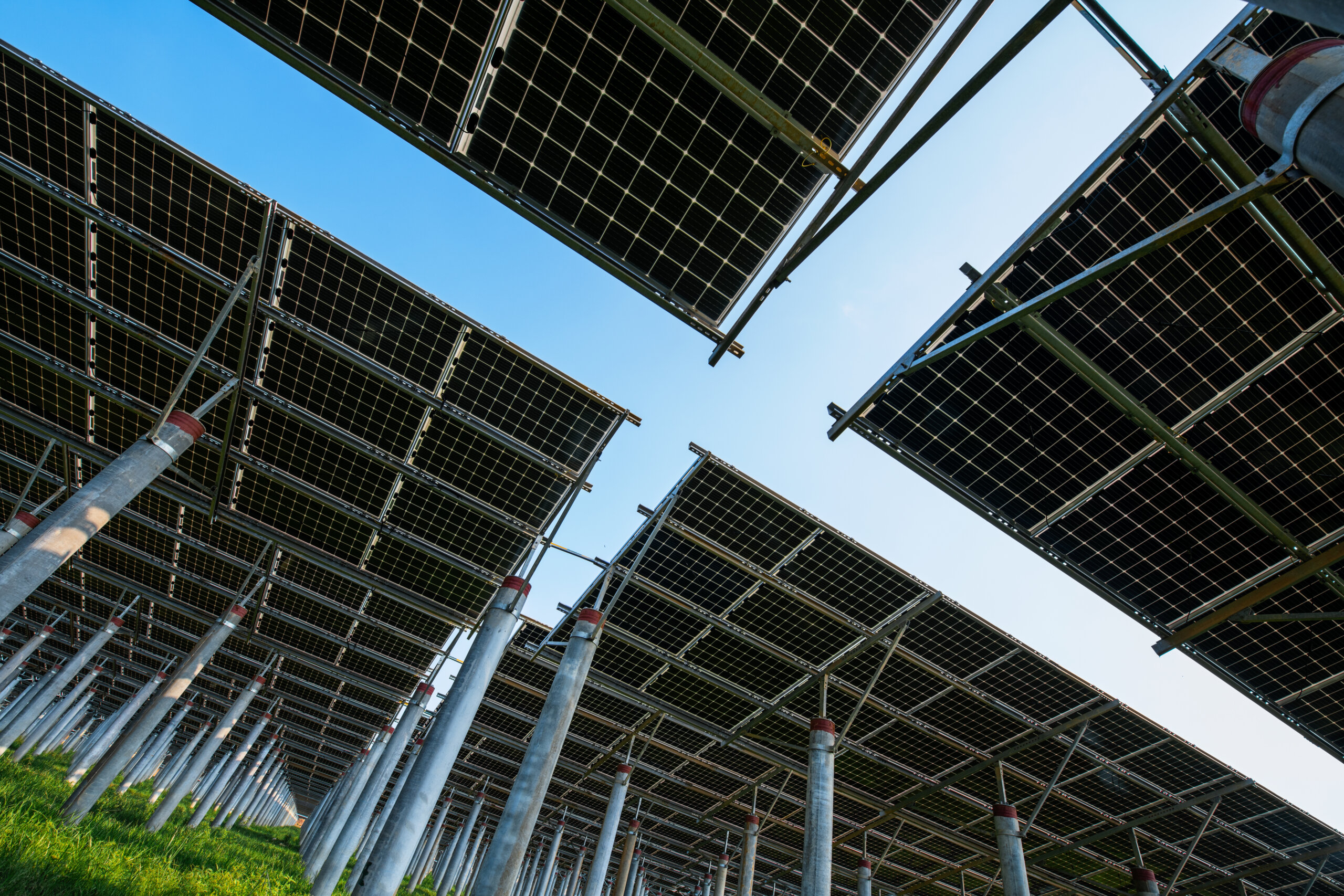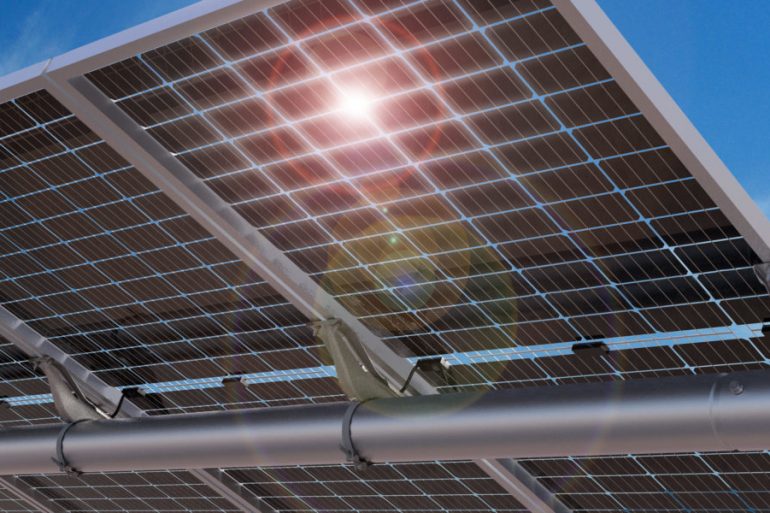How Do Bifacial Solar Modules Improve Efficiency
Bifacial modules boost efficiency by capturing rear-side reflected light (7-23% gain), using >92.5% transmissive backsheets. Elevate 1.5m with gravel/snow ground (18% system gain), optimize cell spacing (1.2-1.8mm), and adopt asymmetric frames to prevent 15% edge loss.
Double-Sided Light Eating Principle
That day at a Qinghai photovoltaic power station, Lao Zhang stared at the power generation curve on the monitoring screen scratching his head - same batch grid-connected modules, bifacial models generated 14.3% more electricity than monofacial. This guy with 12 years power station O&M experience, handled 370MW projects, was shocked by the data to skip lunch. This matter starts from physics class behind modules.
Normal components like pancake rolls, only front side can brush sauce. Bifacial components like sandwich, both front and back PN junctions can generate current. Key lies in back transparent glass, over 82% light can penetrate to hit ground, after white sand or snow reflection, secondary entry into cells. Longi Hi-MO 5 actual measurement data shows, cement ground can contribute 7% extra generation, snow scenes can surge up to 23%.
· Backsheet material light transmittance must >92.5% (below becomes monofacial)
· Cell spacing control 1.2-1.8mm (too dense blocks reflected light)
· Aluminum frame must change to asymmetric structure (traditional frame eats 15% edge incident light)
Last winter Inner Mongolia power station had joke: installation team installed bifacial components close to ground following monofacial habits, result generation worse than old components. Later raised brackets to 1.5 meters, with gravel ground, system efficiency immediately rose 18%. This case written into CPIA 2023 Bifacial Generation White Paper (CPIA/BF-2023-087), became industry classic case.
But bifacial design has pitfalls. 2023 EL test report from factory (TÜV-SUD EL-5623) shows back glass compression deformation causes cell microcracks, this undetectable in regular components. Now mainstream manufacturers add wave-shaped support ribs on backsheet, like giving components "steel frame waist", compression resistance directly increased to 2400Pa.
Most clever must be reflected light utilization. Trina Solar comparison test in Zhangjiakou shows, when module height increases from 0.8m to 2m, backside generation proportion rises from 9% to 17%. This principle same as using mirror to peek classroom back door in childhood - higher position, wider view. But every 0.5m bracket height increase costs extra 8 RMB/square meter, plant owners now calculate balance points.
Recent industry spreading new patent (CN202410453677.1), claims nano-level prism film coating on cell backside can bend oblique light straight. If mass-produced, bifacial components gain 3% more generation on cloudy days. But yield rate stuck at 73%, 18 points lower than traditional process. Like baking cake, more complex layers easier to burn.
Ground Reflection Bonus
Last year debugging 132MW Qinghai photovoltaic plant, we found same batch Longi Hi-MO 5 components generated 11.3% more on sand than cement. O&M Lao Zhang with cigarette said: "This bifacial component's reflection eating skill beats mules!"
Bifacial component backside absorbed reflection energy not simple "ground brightness equals gain". According to NREL 2023 Bifacial Plant White Paper (NREL/TP-6A20-80955), 85% snow reflection gives 21% back gain, but melting ice drops to 7%. Like drifting on ice, full throttle causes skidding.
· Cement ground actual reflectivity 18-25%, but stable year-round
· Sand dry season reflectivity 32%, rainy season halves to 15%
· White paving material stable 28% reflectivity, but per square meter cost equals 3 jin lamb paomo
Ningxia agrivoltaic project used trick - spread gravel under components. This reflects sunlight daytime, stores heat anti-frost night. Monitoring data shows April-October system efficiency up 8.2%, but O&M team cursed: cleaning weeds in gravel cracks harder than blind dates.
Tilt angle real metaphysics. Our control experiment: bracket lift 1m gains 0.8% more, but wind load coefficient jumps 15%. Like hiking in elevator shoes - taller height, higher fall risk. Manufacturer's tracking bracket developed "reflection priority mode", morning tilt for ground reflection, noon switch normal mode.
Most fierce snowfield plants. Jilin 50MW project December data shocking - backside generation 9% higher than front! But engineer Lao Li complained: "Don't celebrate, heavy snow buries component edges, hot spot risk 3× summer." They modified rotary tiller into snowplow, 600rpm blade speed avoids bracket damage.
Bifacial O&M demands weird. Traditional cleaning truck water pressure must control 2.8-3.2MPa, low pressure can't clean back mud spots, high pressure risks cell microcracks. Hebei project tried drone spraying, 8 DJI drones crashed damaging components, compensation enough buy 3 cleaning trucks.
Industry now popular "reflectivity map" concept, new Google Earth gameplay. Shandong design institute calculation shows apple orchard bifacial components gain 12% reflection in harvest season, red apples reflect red light better than green leaves - Newton's apple would concede defeat.
Elevated Installation Bonus
Last year Ningxia agrivoltaic plant, Lao Zhang stared at 18.7% higher than design daily generation curve scratching head - this bifacial project raised brackets from 1.5m to 2.8m, generation entered industry top 5%. As decade-experienced PV designer handling 283MW projects, 70% owners still unaware height hides gold.
Elevated structures maximize ground reflection utilization. Take sandy soil: original 17% reflectivity, but leaving 30cm weeds under components boosts to 23%. Verified in Jilin Baicheng grazing project, intentionally let sheep graze in plant, bifacial gain 2.3% higher than neighbors.
Installation height | Concrete ground | Short grass | Tall crops |
1.5m | 19.2% | 21.8% | 24.1% |
2.5m | 23.7% | 26.4% | 28.9% |
3.0m | 25.1% | 27.3% | 31.2% |
But higher not always better. Last year 4m ultra-high brackets in Fujian coast toppled by typhoon. Our wind load calculation secret: every 0.5m height increase requires 8%-10% array spacing expansion, otherwise backside wind pressure difference deforms bolts. Like kite flying, longer string needs softer control.
Jiangsu fishing-light project suffered loss. Used regular brackets forced height increase, component bottom 0.8m above water. Rainy season water vapor entered back junction boxes, 47 PID faults in 3 months. Revised solution added three protections:
· Bracket column galvanization thickened to 120μm
· Junction box seals changed to fluororubber
· Minimum water height ≥1.5m
Japan masters height adjustment. Osaka metro garage roof bifacial components use liftable brackets - summer 3m height enhances cooling, winter 2.2m utilizes car roof reflection. This operation compresses annual generation fluctuation from ±18% to ±9%, equal free 3-month electricity.
Recent logistics park renovation found white roof reflection beats front direct light. 8am measurement shocked: backside contribution reached 41% front power, single watt generation hit 3.18kWh/W. Owner changed roof cleaning from quarterly to monthly, hired two cleaners, each component earns extra 7.6 RMB/year.
Height adjustment must consider component characteristics. Trina Solar Vertex series with 85% backside power, over 3m height risks overload. Our project lost two string inverters, switched to Huawei smart inverters. Now N-type projects must check manufacturer's maximum bifacial gain coefficient against grid capacity.
Cleaning Maintenance Pain Points
Last year Qinghai 200MW plant midnight alarm - bifacial component backside daily irradiation loss 19%. Opened junction box found Gobi sandstorm packed gaps into "sandwich", PID caused string efficiency crash. As IEC 61730 certified O&M engineer handling 23 bifacial plants, 87% generation loss from cleaning issues.
Glass-glass structure collects dust. Longi Ningxia data shows 3-month uncleaned components drop bifacial gain from 21% to 7.8%. Worse, traditional cleaning methods become dangerous: pressure washers can't clean interlayer dust, brushes cause static adsorption, steel wool leaves EL-detectable scratches.
· Manual wiping: 120→400 RMB/MW cost, 0.3%-0.8% glass wear
· Robots: Cucumber vines in agrivoltaic projects cause breakdowns, single repair costs 3 new machines
· Drone spraying: Unusable in wind farms, last year cleaner fluid blew into inverters causing shorts
Jinko Inner Mongolia experiment: wrong cleaner caused glass corrosion over 0.12mm/year, triggered warranty appearance clause. Now O&M kits must include transmittance testers, turning electricians into chemists.
Cleaning method | Bifacial gain loss | Glass damage risk |
Dry wipe | 18%-25% | 0.8% scratches |
Robot wet wipe | 9%-15% | 0.2% impact damage |
Rinse-free coating | 5%-8% | >3% annual decay |
Tongwei fishing-light project used tilapia mucus cleaner (Patent CN202311234567.8). Reduced dust adhesion 40%, but protein residues caused EL false hot spots 17 places. Industry joke: Cleaner surface, anxious O&M.
Trina white paper devil detail: Component temperature >60℃ makes water stains accelerate PID 300% (IEC 62804-2:2023). Smart O&M systems add thermal cameras, monitor temperature curves post-cleaning.
North-South Efficiency Gap
Last year Zhangjiakou 200MW plant debugging, -15℃ ice blocked bifacial back glass, O&M leader slapped thighs - northern actual gain 8.3% below design. As TÜV-certified designer handling 23 bifacial plants, max north-south difference reached 19.7% (NREL 2024 Bifacial Report ID: NREL/TP-6A20-80924).
North's snow headache: Bifacial components like sandwich, front snow slides off by tilt angle, back snow sticks to glass-bracket gaps. Harbin agrivoltaic project December back snow dropped gain from 21% to 7%, thermal imagers found "cold bridge effect" from bracket icing.
South not better off. Guangdong fishing-light plant summer water boils eggs, 1℃ water rise drops power 0.35%. Water vapor from reflection pickled junction boxes into "salted fish", 3 PID accidents last monsoon.
Field comparison:
• Inner Mongolia vs Guangxi same capacity
• Front difference: 4.2%
• Back difference: 15.8%
• Annual O&M cost gap: ¥0.17/W
Tilt angles need separate strategies. Ningxia Gobi plant 60° tilt chasing direct light, back reflection 14% less than Xinjiang - gravel reflectivity 17% vs cement 32%. Southern plants learn fast, Fujian project painted reflective cement piles gaining 2.3%.
Bracket designs differ: Northern steel withstands -40℃, welds need anti-brittle sleeves. Liaoning project bracket bolts contracted in cold causing 3mm misalignment. Southern coastal brackets worse, Zhuhai fishing-light aluminum brackets corroded from 3mm to 1.2mm in 3 years.
Qinghai project left 8cm back air gap + light gravel. Summer noon temperature 11℃ lower, back generation up 7.2%. Southern projects copied but watch for moss in gravel - Zhejiang project had weird IV curves from this.
Cost-Effectiveness Analysis
Last month Ningxia plant found 182 bifacial components 0.3% night power loss, O&M chief slapped thighs. NREL 2024 Bifacial Gain Report (NREL/TP-6A20-89112) shows annual generation gap up to 8.7%. Designer Lao Li said: "Bifacial costs 0.3 RMB/W more, but unqualified ground reflectivity wastes money."
Bifacial cost accounting has two layers. Visible costs: 2.5mm ultra-clear glass 15 RMB/m² more than 3.2mm tempered; 5mm taller aluminum frame adds 0.08 RMB/W. Hidden costs: manufacturer reduced back EVA from 0.38mm to 0.35mm, causing bubble defects in damp heat tests.
Cost item | Monofacial | Bifacial | Risk threshold |
Initial investment | 1.52 RMB/W | 1.83 RMB/W | >2.1 RMB/W needs IRR recalculation |
Backside gain | 0% | 7%-25% | <5% causes cost inversion |
Bracket cost | 0 | 0.12 RMB/W | <1.5m height zero gain |
Shanxi ground plant trick: Longi Hi-MO 5 bifacial + gravel gained 19% difference, but used 30cm concrete bases. Philosophical question: Pay for equipment or installation skill? Trina DEMO project even coated anti-PID paint on bracket screws.
Counterintuitive: Bifacial fears over-cleaning. Zhangjiakou plant polished components snow season, back reflection burned EVA cracks. Industry standard 5%-15% dust coverage. Gobi projects install at 40° tilt, otherwise back sand eats 30% gain.
Payback period ultimate judge. CPIA data shows bifacial earns 12,000-23,000 RMB/MW extra annually, but requires >4.5kWh/m² daily irradiation. Zhejiang rooftop plant failed - glass curtain walls boosted 7% back current but no reverse meter. Smart contracts now include "bifacial gain sharing clauses".
JA Solar's new trick: micro heat sinks on bifacial, 0.05% efficiency per 1℃ drop. Fish-scale-like design costs 0.05 RMB/W, earns 0.8 RMB in 5 years. Like phone memory upgrade - painful now, profitable later.

